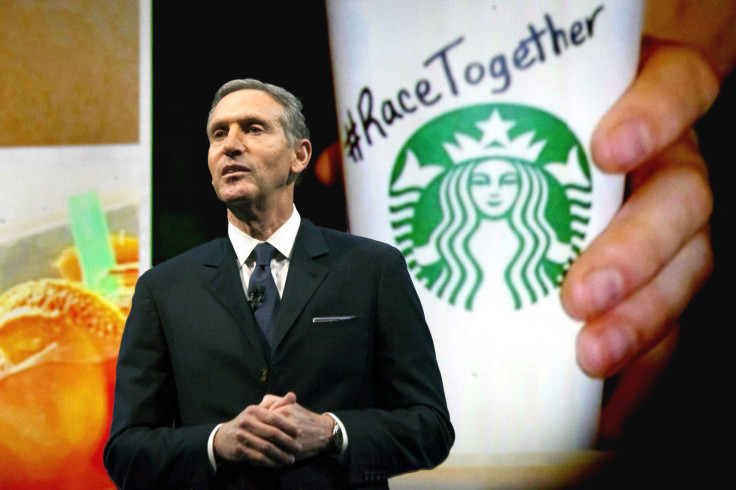Starbucks Ends ‘Race Together’ Cup-Writing Campaign After Accusations Coffee Chain Was Exploiting Police Killings Of Black Males

Less than a week after announcing a campaign prompted by racially-charged incidents involving the killing of black men and boys by police officers, the Starbucks Corp. halted the practice of urging its baristas to write “Race Together” on customers’ cups. The policy was part of a yearlong effort to address race relations in the U.S. that the Seattle-based coffee company announced March 16, but it was immediately criticized as a commercial exploitation of a serious topic.
An internal memo authored by Starbucks Chairman and CEO Howard Schultz obtained by the Associated Press said the cup messages were always intended to be “just a catalyst” for sparking constructive dialogue over race in America. The company said it intends to continue to host forums at its locations and publish special sections about the issue in USA Today. Starbucks also said it intends to open more stores in minority communities.
I am 100% interested in engaging with Starbucks employees in a conversation about race. Let's start with anyone _but_ the baristas. VPs! HR!
— Anil Dash (@anildash) March 17, 2015From #RaceTogether to #EraseTogether in 7 days • Starbucks baristas no longer writing 'Race Together' on cups. http://t.co/C6Vg9N8fzG
— Ida B.row Wells (@JenJamesBeauty) March 22, 2015The Race Together campaign was ridiculed on social-media sites as being tone-deaf and insensitive by Starbucks inserting itself into a serious national debate over perceived racial discrimination among law-enforcement personnel. Many comments on Twitter mocked Starbucks’ efforts. And several media outlets accused the company of being “obnoxious” and said that compelling its employees to engage in the campaign was “taxing and unfair.”
“It’s the height of liberal American idealism and a staggering act of hubris to think we can solve our systemic addiction to racism over a Frappucino,” Danielle Henderson wrote at fusion.net.
Barista: Your total is $5.45 Me: You can just put that on my reparations tab. Thanks. #raceTogether
- Zach Stafford (@ZachStafford) March 17, 2015Starbucks representative Jim Olson told AP the decision to halt the practice of having employees write “Race Together” on cups was not made in response to criticisms.
A U.S. Justice Department report released this month in the wake of the Michael Brown shooting in Ferguson, Missouri, last August found a pattern of racial bias in the city’s treatment of its African-American citizens. The report led to questions about how widespread this institutional bias extends in cities and towns across the country.
© Copyright IBTimes 2024. All rights reserved.






















